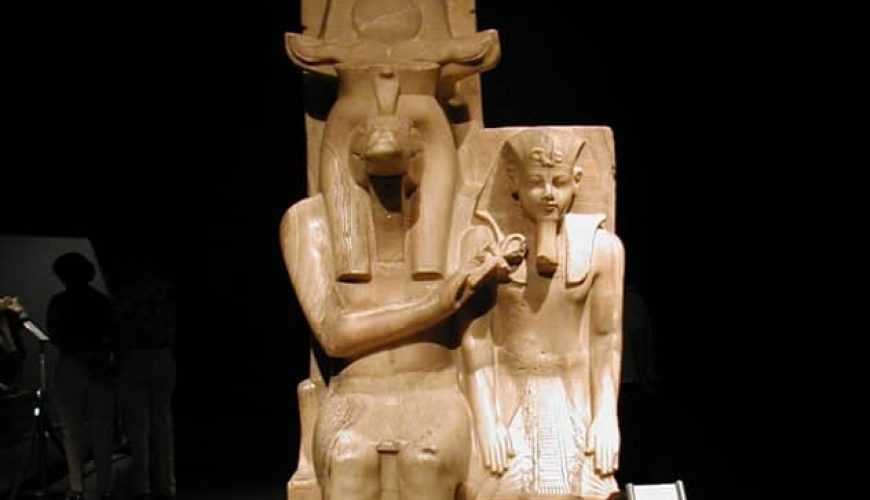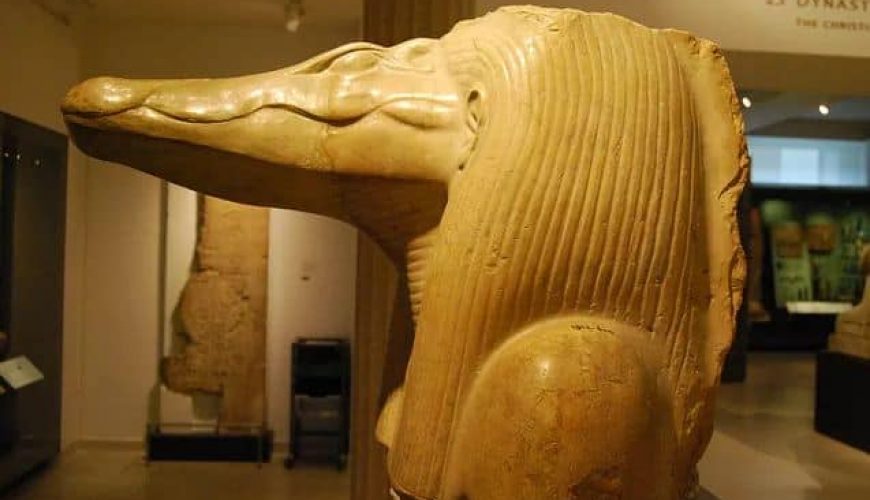Statue of the god Sobek and Amenhotep III
The idol Sobek was depicted in the form of a crocodile or a human body and a crocodile head. The crocodile has been associated with the Egyptians since ancient Egyptian times. It was a symbol of both good and evil, as it appeared in a contradictory way among the ancient Egyptians, between reverence and hatred, as it was a symbol of the god Sobek, who represents a symbol of life. Still, it was also a symbol of evil for some others.
bust:
Material: Egyptian Alabaster
Height: 256,5cm
Venue: Luxor Museum.
This statue represents Amenhotep III with the god Sobek in the form of a human body and a crocodile head, wearing a crown, and his right hand holding the ankh sign “life”. He extends it towards Amenhotep with the sign of life (ankh), as if granting him life and immortality.
The king is standing to the right of Sobek, wearing the Nemes headdress, with a royal beard. The king receives the sign of life, ankh, from Sobek’s hands; both hands of the king are laid flat on an apron.
He was found at the bottom of a well filled with water, and this well was inside a temple in the Somno area near Armant.
It was locked with a limestone slab that slides on two bronze wheels.
A century after this statue was carved, King Ramses II removed the name of Amenhotep III and added his own inscriptions on the base, on the king’s belt and the right side of the throne, and the back and side of the dorsal panel.
Obviously, the attempted theft, especially the cartridge, had erased some letters and carved others.
Although it is easy to recognize Amenhotep III by his features
Characteristics such as the shape of a sacred uraeus or royal cobra and a single grooved line above each eye. The king’s beautiful face conveys a sense of youth and may have been carved for the king in the middle of his reign.





Comment (0)